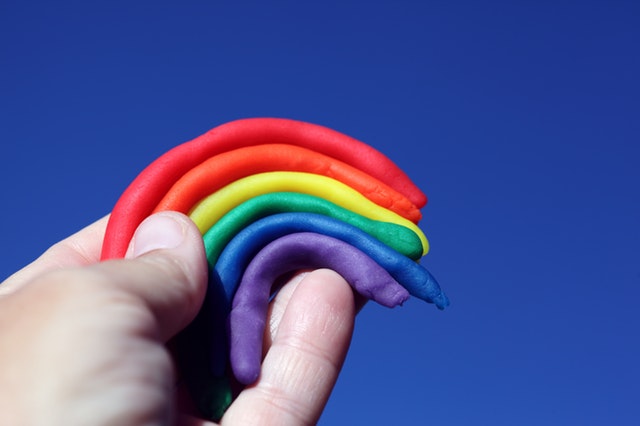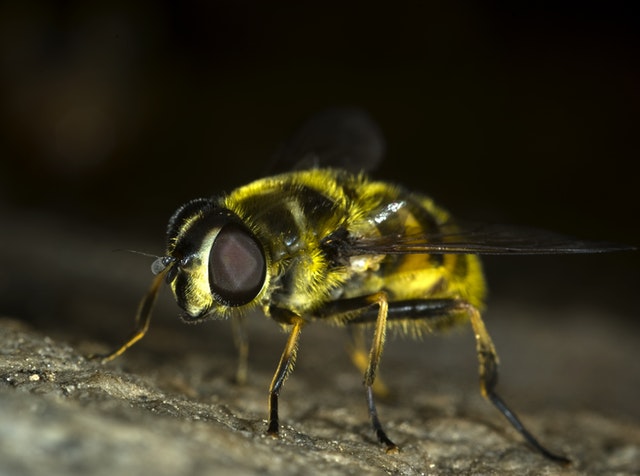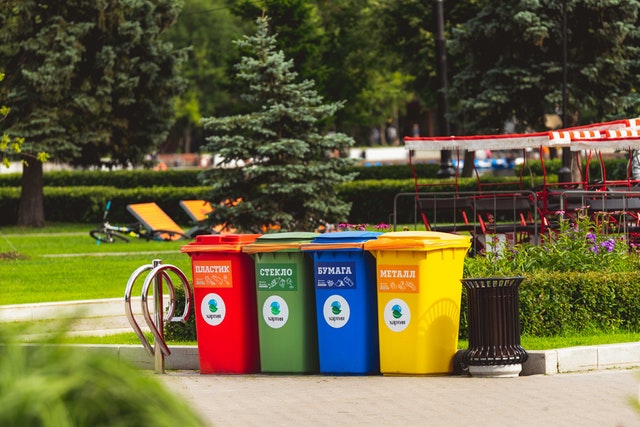If a color attracts wasps, some colors may also repel them but the evidence to support the hypothesis is deficient. Wasps will ignore some objects regardless of how attractive they look and move to some.
Can wasps see in color? Yes, the only color they cannot see is red. In fact, color influences their behavior. That is the key reason most trap manufacturers rely on extensive color research to come up with great designs that can attract, capture and kill wasps.
Table of Contents
Are wasps naturally attracted to certain colors?
Some homeowners paint the porch ceiling of their homes blue because they believe the color discourages wasps from their building and so they cannot build nests near the entryway. Even though it is not true that blue paint repels wasps actively, it is not attractive to these insects.
Research that the Chinese conducted on Ichneumonidae wasps provided limited support to the theory. Insofar, a study on one species of wasps and hornets can apply to a different species living in another country. The study proved that yellow and green traps for wasps were more effective than the others were. The blue traps were among the least effective. Nevertheless, the same study showed that Ichneumonidae wasps changed their color preferences when the researchers changed the location of traps. The black traps were least effective when it came to trapping the wasps in the first two locations but they were the most effective in the third location.
Another study that the United States Department of Agriculture conducted showed that the distant cousins of wasps, honeybees, attacked objects that resembled the nest-raiding predators like bears and skunks. Bees saw dark objects, leathery or furry, including people who wore dark clothes like a big threat to them. And as you already know, they respond to such threats with aggression. Honeybees perceive the red color as black, which means that you should not wear red cloth when approaching honeybees. Red color does not repel them, but it is unlikely to attract their attention.
How wasps differ from the other insects and humans when it comes to identifying colors
How do wasps see?
Studies have taken us to a higher level when it comes to understanding the behavior of wasps and how they detect their food. First, researchers believe that the independent life of the preys makes a great topic and reading materials on the topic.
The color range people call visible light is a small portion of the electromagnetic spectrum with high frequencies (6×10^14 Hz). The red color takes the lowest frequency of visible light and the violet color occupies the highest frequency. The human eyes can see that light spectrum. Insects with simple eyes have little abilities because they can only differentiate between darkness and light.

On the other hand, wasps have compound eyes, which mean that they have 3 eyes, but some insects like caterpillars may have 6. However, the organs are not as sophisticated as the human eyes. The compound eye is something different. The eye consists of many small segments known as ommatidia that are capable of seeing in full color. The light spectrum that the eyes detect is usually displaced to a higher range of frequencies. In other words, the red-end vision of the wasp is very poor, but they see most of the other colors properly up to what is known as the “ultraviolet“.
The world seen through a wasps compound eye

Humans only guess how the colors look like, but the modern filtration and attenuating techniques help us interpret the colors visibly making the world to appear differently. The petals of the plants they visit are decorated in intricate patterns that highlight the adjacent nectar sources and reproductive areas for the visiting insects to differentiate between them easily. Scientists are still studying the invisible world insects enjoy.
Wasps, honeybees and cockroaches have compound eyes.
Most of the compound-eye insects are bichromatic. That means that they have two forms of color pigment receptors. As a result, they are not good at differentiating pure colors from a mixture of colors. Their color spectrum is very limited.
Trichromatic insects including wasps and bees have three forms of pigment receptors, incidentally humans also have 3 pigment receptors. That is unlikely to happen with the bichromatic insects. However, the three receptors of pigments do not coincide with those of humans. When it comes to ultraviolet color, honeybees and wasps use it to identify the nectar-producing flowers.
A simple experiment to help you understand how wasps and the other insects see color
Take two colored paper pieces, a blue one and a yellow one. If you check the RGB values in your personal computer, you will realize that the yellow color is 255,255,0 and the blue color is 0,0,255. Ensure that the papers are not aromatic at all. Do not use solvent-based paints because most insects have highly developed smell senses and will affect the results.
Take the two pieces of paper and leave them outdoors in an area where insects frequent. You will realize that the yellow color attracts them more. Night flying wasps will find violet, blue and ultraviolet light more attractive. If you placed a fluorescent tube light near a white sheet late at the night, you will realize that moths, beetles and wasps will get attracted. You will have to be careful when setting up the experiment because the aroma might override the color.
Do wasps rely on color to find food?
Generally, wasps eat insects and can help you control pests around your home naturally. They ignore humans but they are likely to be a huge problem if they construct their nests around your home – they can sting if disturbed. By knowing the color that attracts wasps and the one that repels them, you can discourage the construction of nests around your home. Some of the foods they search for include:

Protein based foods
You will mostly see wasps flying around picnic sites or your trashcans in the warm months of early summer and spring. That is because at that time they will be looking for protein-based foods including meat and any other food scrap.
They mostly move to the places that they’ve fed previously. To discourage them from returning, you will have to empty all your trashcans and cover any compost pile. And even though you can remove the food sources regularly, the wasps will be coming back to search for food. Clean the cans consistently to remove the smell of food.
Sweet foods
In late summer and fall, wasps do not need any more protein-based foods. Instead, they start going for sweet foods like fruit, fruit juices and soda. As a result, they become more persistent and aggressive. When camping outside, you will have to discourage the wasps by covering the food. Place a cover on the compost heap too.
When drinking from cans, you will have to straw because the wasps can easily enter the can without you noticing it. If there are any fruit trees within your yard, you will have to collect all the fallen fruits immediately.
Flowers
Wasps rely on their ability to detect colors to search for nectar, which is an important food source for them. That is the key reason you will find them flying around you if there are no flowers in your yard.
They will come near you if you wear floral bright color clothing or floral print clothing. Likewise, any sweet smelling perfume will attract them. During early fall and late summer, avoid using perfume or wearing colorful clothes when outdoors.
Keep in mind that the diet for wasps varies from one species to the other. Mostly, wasps feed the larvae with bits of insects that they kill and chop up. The adults feed on nectar, sugary liquid that the larvae produce and honeydew.
Most wasp species are parasitic insects, which mean that they lay their eggs on other insects and they do not bother humans. The wasps that you see around your home are the friendly wasps and they are unlikely to bother you. They come there searching for food.
Wasps are beneficial to the ecosystem because they help control the population of insects. Humans fear them due to their powerful sting, which they can use severally. That is the key reason most homeowners will start looking for the most effective wasp control method if they spot a nest around their home or garden. Knowing what wasps like eating and how they search for the food will help you in the control.
What to do when in wasp infested areas
As I have already stated, the color of your skirt, shirt or any other clothing you choose can determine how a wasp or a bee will behave when around you. Some colors might make them see you as a predator, a flower or ignore you. Unlike humans, bees have complex eyesight. They see everything in a different way and incorrect objects might attract them when they are flying around.
Some individuals like perfumes that smell like flowers. If you choose such fragrances, you will have to avoid colorful clothes. The eyes of wasps are made to identify flowers and they will get attracted to bright colors. If you choose a bright color, you will attract most of them because they will mistake you for a flower. If you have been using laundry detergents with UV brighteners, you will definitely attract them. Keep your clothes light and choose pale colors.
Want to learn more about how insects see? Check out our article on

Does bees like Blue as I wore blue shorts